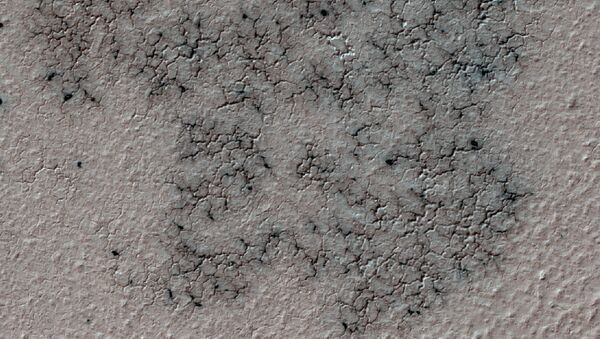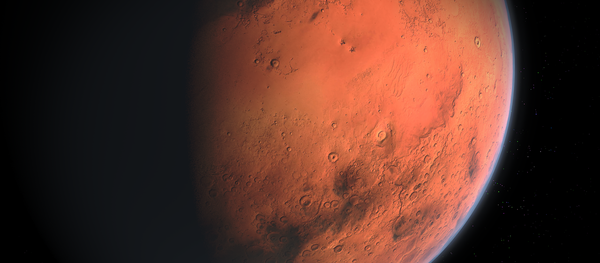Spiders (or "araneiforms," their scientific name) form during the Martian winter, when carbon dioxide turns to "dry" ice. When winter becomes spring, sunlight penetrates the translucent ice and warms the ground underneath it. The ice then begins to melt, causing erosion — but the carbon dioxide doesn't stay in a liquid form for long, and so it becomes gas once more. Thus, the ice turns to gas, pulling pieces of soil along with them in every direction.
The end result is a mass of spindly branches that resemble spider legs — hence the nickname. Thus far, all spiders were discovered in the South Polar Layered Deposits (SPLD) near the planet's south pole.
Oxford University leads the hunt for the Martian spiders through the use of the HiRISE (High Resolution Imaging Experiment) camera which monitors the Martian South Pole. HiRISE is aboard NASA's Mars Reconnaissance Orbiter, and the Department of Astrophysics at Oxford hosts a the Zooniverse project, where citizen volunteers can comb through HiRISE photos to search for spiders and other Martian geological phenomena.
Some 10,000 such volunteers have viewed and classified the photos — and discovered that some of the spiders were showing up on the edges of the South Pole, far from where they usually form. They brought their find to the attention of astronomers, leading to an official scientific inquiry.
"This was a totally unexpected find," wrote Meg Schwamb with the multinational Gemini Observatory, the paper's lead author. "By having so many eyes scouring the images, we know now that the SPLD is not the only place where spiders form. This will help us better understand the carbon dioxide jet formation process.
"The carbon dioxide jet process that forms 'spiders' is a completely un-Earthly phenomenon," she added. "The only other body suspected of having these jets is Neptune's moon Triton. By studying these spiders and jets we're learning more about how Mars differs from Earth. The jet process is linked to the Martian seasons and is returning carbon dioxide to the atmosphere, studying these new locales will give new insights into the Martian atmosphere."
Up next, Schwamb wants to find how far north the spiders go.




